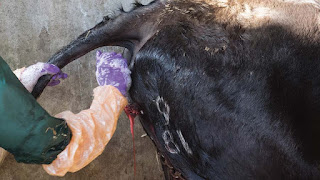TriRace 100ml
In the realm of equine healthcare, ensuring optimal treatment options is paramount for maintaining the health, performance, and well-being of horses. Among the myriad of injectable medications available, Trirace 100ml injection for horse has garnered attention due to its potent combination of anti-inflammatory and analgesic agents. We aims to provide an in-depth understanding of Trirace 100ml injection, including its pharmaceutical composition, indications, usage guidelines, and safety considerations. Buscopan Compositum 100ml
What is TriRace 100ml Injection?
TriRace is a veterinary injectable formulation specifically designed for horses. It combines multiple active pharmaceutical ingredients to address various inflammatory and pain-related conditions common in equine practice. Its formulation aims to provide rapid relief from inflammation, swelling, and pain associated with musculoskeletal disorders, post-surgical recovery, and other inflammatory processes.
The TriRace 100ml injection is administered via intramuscular or intravenous routes, depending on the veterinarian's recommendation, and is formulated to deliver effective therapeutic results with a convenient dosing regimen.
Benefits Of TriRace Injection
- Powerful inflammation reduction: Dexamethasone, a powerful corticosteroid, quickly suppresses inflammation, reducing swelling, pain, and stiffness.
- Promotes Pain Relief: Phenylbutazone, a nonsteroidal anti-inflammatory drug (NSAID), provides powerful analgesic effects, reduces discomfort, and enhances mobility.
- Accelerated Recovery: TriRace's combined anti-inflammatory and analgesic properties facilitate faster recovery from injuries and reduced post-workout pain.
- Performance Support: By reducing pain and inflammation, TriRace enhances performance potential, helping your animals return to peak condition more quickly.
Pharmaceutical Composition of Trirace 100ml Injection
Understanding the pharmaceutical composition of Trirace is crucial for veterinarians and horse owners alike. The formulation includes:
| Active Ingredients | Concentration per 100ml | Function |
|---|---|---|
| Dexamethasone | 0.33 mg | Corticosteroid with anti-inflammatory and immunosuppressive properties |
| Flumethasone | 0.5 mg | Potent corticosteroid with anti-inflammatory effects |
| Phenylbutazone | 1.00 mg | Non-steroidal anti-inflammatory drug (NSAID) for pain relief |
| Excipient (OSP) | 1 ml | Inactive substance serving as a vehicle and stabilizer |
Breakdown of the Active Pharmaceutical Ingredients
1. Dexamethasone (0.33 mg per 100ml)
Dexamethasone is a synthetic corticosteroid with potent anti-inflammatory properties. It works by suppressing the immune response and reducing the production of inflammatory mediators. In equine medicine, dexamethasone is often used to manage inflammatory conditions such as arthritis, allergic reactions, and respiratory diseases.
2. Flumethasone (0.5 mg per 100ml)
Flumethasone is another corticosteroid with anti-inflammatory effects. It is known for its longer duration of action and potency. When combined with dexamethasone, it provides a synergistic effect, enhancing the overall anti-inflammatory response, which is particularly beneficial in severe or chronic inflammatory conditions.
3. Phenylbutazone (1.00 mg per 100ml)
Phenylbutazone is a widely used NSAID in horses. It effectively alleviates pain, reduces fever, and diminishes inflammation. It is primarily used for conditions like lameness due to musculoskeletal injuries, bursitis, and other inflammatory ailments.
4. Excipient (OSP) – 1 ml
The excipient, often an oil-based solvent like OSP (Oil Soluble Product), acts as a carrier for the active ingredients, ensuring stability and proper absorption upon injection.
Therapeutic Indications
Trirace 100ml injection for horses is primarily indicated for:
- Management of inflammatory and allergic conditions
- Treatment of musculoskeletal injuries such as arthritis, bursitis, and tendinitis
- Post-surgical inflammation control
- Pain relief associated with inflammatory processes
- Allergic airway diseases
Dosage and Administration
The dosage of TriRace depends on the severity of the condition, the weight of the animal, and the veterinarian's discretion. Typically, the injection is administered:
- Intramuscularly or intravenously, with the usual dose being Large Animal: 20ml / Animal
Dog and Cats: 0.5 - 1ml / Animal, administered once or twice daily. - Duration of treatment should be closely monitored, avoiding prolonged use to prevent adverse effects.
Important: Always consult a qualified veterinarian before administering TriRace to determine the appropriate dosage and treatment duration.
Safety Precautions and Side Effects
While TriRace is effective, its use must be carefully managed to minimize potential risks:
Potential Side Effects:
- Suppression of the immune system
- Gastrointestinal ulcers
- Laminitis in susceptible horses
- Increased susceptibility to infections
- Behavioral changes
Precautions:
- Do not use in horses with systemic infections unless accompanied by appropriate antimicrobial therapy
- Avoid prolonged treatment to prevent corticosteroid-related complications
- Monitor for signs of adverse reactions during therapy
- Use with caution in pregnant or lactating mares
Withdrawal Periods
Camel and Horses:
Meat 24 days
Milk 3 days
Storage and Handling
- Store the injection in a cool, dry place away from direct sunlight
- Keep out of reach of children and unauthorized personnel
- Shake well before use, if applicable
- Discard unused portion in accordance with local regulations
Conclusion
Trirace 100ml injection for horses represents a potent combination therapy designed to combat inflammation and pain efficiently in equine patients. Its unique formulation, comprising dexamethasone, flumethasone, phenylbutazone, and suitable excipients, allows for effective management of a wide range of inflammatory conditions in horses.
However, due to the potent nature of its components, it must be used judiciously under veterinary supervision to ensure maximum benefits while minimizing risks. Always adhere to the prescribed dosage and treatment duration, and monitor your horse closely throughout therapy.
By understanding the composition and proper use of Trirace, horse owners and veterinarians can make informed decisions that promote the health and performance of their equine companions.
Final Note
If you're considering Trirace 100ml injection for horse for your equine patient's treatment, consult your veterinarian for personalized advice tailored to your horse's specific condition. Proper veterinary guidance ensures safe and effective therapy, helping your horse lead a healthy, active life.
Presentation
100ml vial














